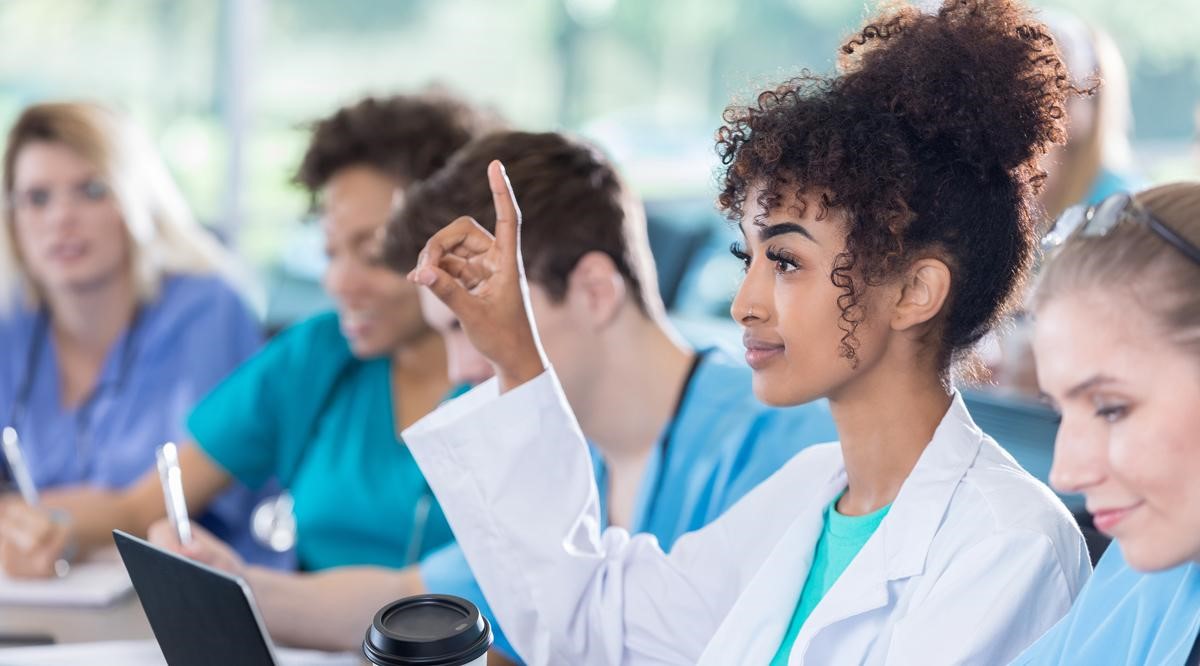Here, you will learn a lot about our internal organs. In particular, how to diagnose and treat their diseases.
The lecture extends over two semesters. Endocrinology, gastroenterology, hepatology and hematology are on the agenda for the summer semester. In the winter semester, on the other hand, you will mainly deal with cardiology, pneumology and nephrology. Two lectures on intensive care medicine are also part of the series. Infectiology and rheumatology/immunology await you in higher semesters.
However, the quality of the lectures between the individual lecturers is very variable. The best thing to do is just listen in to see which style suits you. With us, the lecture was held live. An online transmission took place at the same time. But unfortunately there was no recording. That was pretty stupid, especially for students like me. I was busy in the lab for about half the week doing my doctoral thesis, so I had to skip the lecture. Instead, I picked up a short textbook; Medicmind Australia helped me in this. Here I looked in particular at the topics that were dealt with by the lecturers in the lecture. Ambos is also a good alternative or supplement to the lecture. As you can see, the lecture is not a must. However, it provides a good basis for the exam.
Exam performance
As always, at the end of all the learning there is an exam. The entire material is tested in 60 questions. All different disciplines are dealt with. Some are weighted more, others less. A look at the old exams helps for orientation. If you cross the Case Trains, you can see that the level has risen steadily over the past few years. Old questions have become rare. But no fear! Even if the grades are a bit worse, with a little preparation you will surely pass the exam.
One thing has to be said: as exciting as the subject is, it is also time-consuming. It requires by far the most effort in the entire semester. And it is definitely one of the most learning-intensive of the entire course. But I think the learning is worth it! So I got a little light or two. I could finally understand and classify illnesses that I had often heard about. And: Once you learn internal medicine properly, you have created a good basis for many other subjects. You will be happy at the latest when you are preparing for the second state exam. Internal medicine plays a big part here.
Clinical internship in internal medicine
Accompanying the lecture, an internship takes place directly on the ward. A total of six dates per semester await you. Here you will learn to apply the theory from the PKU course directly in practice. The students get to know two patients per course date. First, their anamnesis is collected. Then the physical examination follows. Of course you can also puzzle over the diagnosis. But that is not the focus here. It is much more important to lose one’s inhibitions on the patient and to practice the examination techniques directly on the patient. A lecturer looks over your shoulder. He gives you helpful tips and tricks. At the end, everyone discusses their case together. The attending doctor also provides additional background information. And sometimes you take a quick look at the file. Looking back, KPIM was a lot of fun! The course was exciting and instructive and offers you an important basis for your first traineeships.
Radiology – X-ray vision is not the only thing that counts
The second major subject that awaits you in the seventh semester is radiology. Here you will learn about the different imaging methods. Some are used not only in diagnostics, but also in therapy. There is a lot on offer there, from classic X-rays to sonography, MRT, CT or nuclear medicine. On the one hand, the course teaches the technical theory behind the respective process. Of course, the application in everyday clinical practice is also discussed. When is which “image” suitable? How and where do I recognize the pathology? Radiology is also a very basic subject that you will encounter (almost) everywhere. Once learned cleverly and you will certainly thank you later.
The lecture is highly recommended. The lecturers strive to awaken your enthusiasm for radiology. In the main lecture, all relevant basics are taught. On the other hand, the additional lecture deals with special pathologies. Both are thematically coordinated. We offered the event in a hybrid format. The face-to-face event was broadcast online at the same time to the students at home. In addition, the lecture was videotaped. A great concept! There is also a seminar once a week. The content was deepened here sometimes more, sometimes less interactively. All in all, the implementation of the teaching content was top notch!
At the end of the semester you will also have an exam here. The 30 questions consist mainly of picture questions. Here, too, I feel that the demand has steadily increased over the past few years. The old exams will help you to find your way around. However, old questions tend to become rarer. But the same applies here: With good preparation, the exam is doable. Personally, I just picked up the lecture. However, a more in-depth look at other teaching materials certainly does not hurt.
Interdisciplinary oncology – an overview of various types of cancer
Interdisciplinary oncology awaits you in the seventh semester. Why interdisciplinary? Because both clinicians and pathologists and Nuclear medicine doctors or radiotherapists are on board. The main part of the course is a series of lectures. Common cancers are discussed in the individual sessions. From mamma-ca, bone and soft tissue sarcomas to melanoma, a wide variety is offered. You will be introduced to the different stages of diagnostics and therapy. A case example should make the whole thing clearer. With us, the lectures were set to music and uploaded.
The exam consists of 30 questions. The basis is ultimately the lectures. It is therefore advisable to deal with their content. Here, too, a look at the old exams is helpful for preparation and orientation.
However, the course also includes other seminars. In the communication seminar you will learn how to deliver difficult news to an (actor) patient. This can be, for example, a cancer diagnosis or a recurrence. Other (online) seminars also deal with topics such as evidence-based medicine, transplantation medicine or oncological rehabilitation.
Orthopedics – a trip
In orthopedics you will learn the basics about diseases of the musculoskeletal system. The course includes a lecture (in our video format) that familiarizes you with the basics of the subject. Ultimately, it represents the basis of the exam. With a view to the lecture and the old questions, the exam should be easy to do. Here you will get to know various orthopedic tests and examination techniques in small groups.
Forensic medicine – a thriller in everyday university life
Forensic medicine is also on the semester schedule. A subject that most people probably know from crime novels. And sometimes the lecture actually felt like a little thriller. Overall, the two lecture series extend over two semesters. Here you will get exciting, scary insights into the subject. For the exam, a short look at the lecture and a slightly longer look at the old questions would be enough. Nevertheless, I can recommend the lecture to you. And especially for those who fancy a little thriller in everyday university life.



